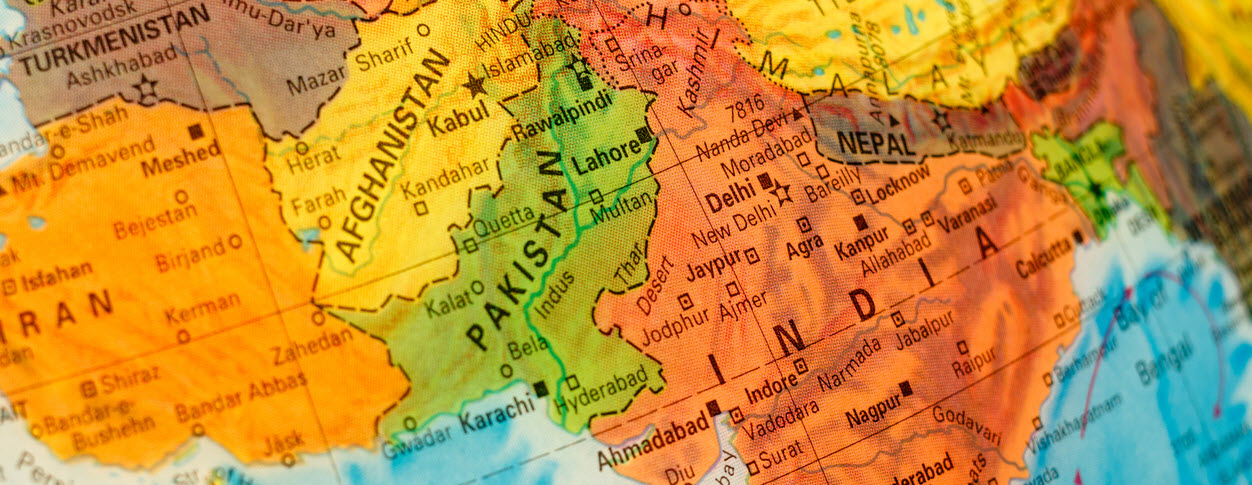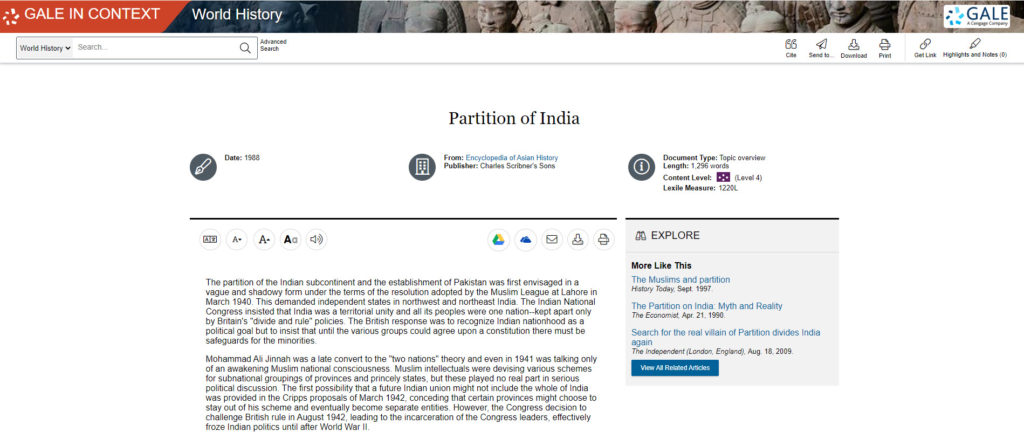| By Gale Staff |
Seventy-five years ago this week, two of the world’s most populous countries, India and Pakistan, gained their independence. The entire Indian subcontinent had been under the colonial rule of Great Britain since the mid-nineteenth century, and Britain finally acceded to India’s and Pakistan’s independence on August 15, 1947 (although Pakistan defied expectations and declared its independence a day earlier, on August 14). Gale In Context: World History provides a wealth of resources for librarians and teachers that help students understand the events that led to the countries’ independence—including biographies of key figures such as Mohandas Gandhi and Jawaharlal Nehru—as well as the catastrophic partition that resulted.
Before independence, Indians had little power in their own country, so the Indian National Congress party (INC) was formed in 1885. Initially, it pushed for greater rights and more say in how the country was governed. Frustrated over time, however, by British intransigence, the INC began demanding independence. One of the key events in the Indian independence movement was Gandhi’s Salt March in 1930 that inspired his fellow Indians to acts of nonviolent resistance.
Although the INC began as a movement to represent all Indians, it became perceived as mostly a Hindu organization, and it lost the support of a majority of Muslims. The All-India Muslim League formed in 1906, and by 1930 it was calling for a separate Muslim-majority independent nation. Gandhi and other INC leaders were deeply opposed, however, to a partition of India, and believed that Hindus and Muslims could live together.
Negotiations with the British accelerated after the end of World War II, as the British government met with the INC and the All-India Muslim League. A resolution of the talks that would lead to independence foundered, however, on the Muslim League’s insistence on a separate country for Muslims. Mohammad Ali Jinnah, the leader of the Muslim League, called for a day of protest on August 16, 1946, and a weeklong clash between Muslims and Hindus ensued in Calcutta. Four thousand people died, and violence spread across the country.
The chaos convinced the British government that it could no longer govern the country, and in early 1947 British viceroy Lord Mountbatten announced that India would be given independence. British officials left the composition of the new country up to each region, as voters decided whether to remain a part of India or split off to form a separate Muslim country. Not surprisingly, voters in Muslim-majority areas voted to form a separate country. This was somewhat complicated by the fact that Muslims made up the majority of both northwest and northeast India, so the new country of Pakistan was formed out of two regions that were thousands of miles apart: West Pakistan (present-day Pakistan) and East Pakistan (which became the independent country of Bangladesh after the India-Pakistan War of 1971).
Even more problematic were the state of Punjab and the combined region of Jammu and Kashmir. In Punjab, the province was divided between the west, which was primarily Muslim, and the east, which was primarily Hindu and Sikh. Nonetheless, many Hindus and Sikhs lived in the west, while many Muslims lived in the east. This was true throughout the country, as every region had a mix of people of different faiths. Furthermore, the line of partition sometimes seemed arbitrary in some of the areas where it divided India and Pakistan. The partition precipitated one of the largest mass migrations in history, as millions of Muslims moved from their homes to live in Pakistan, while millions of Hindus and Sikhs moved in the opposite direction. Horrific violence and atrocities accompanied the upheaval, including mass murder and rape. Estimates of how many people died range from 200,000 to 1,000,000.
The area of Jammu and Kashmir was also divided, but not before a war broke out between the new countries of India and Pakistan in October 1947, as Pakistan looked to seize control of the mostly Muslim region. The Indian military was able to push back the Pakistani forces and has controlled two-thirds of Jammu and Kashmir ever since. Although an independence movement in that province continues to push for self-determination, India has refused to allow for a referendum to be held.
Despite the violence that accompanied their independence, both Pakistan and India will celebrate their semi-sesquicentennials (a Latin word for a 75th anniversary), remembering their achievements and looking forward to brighter futures.



